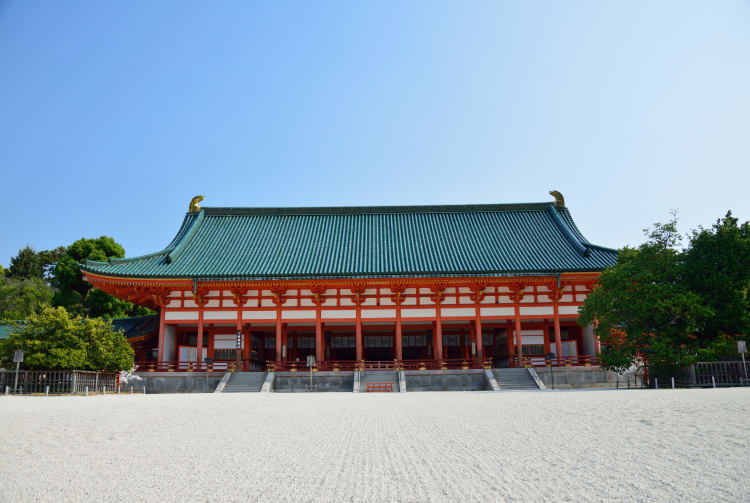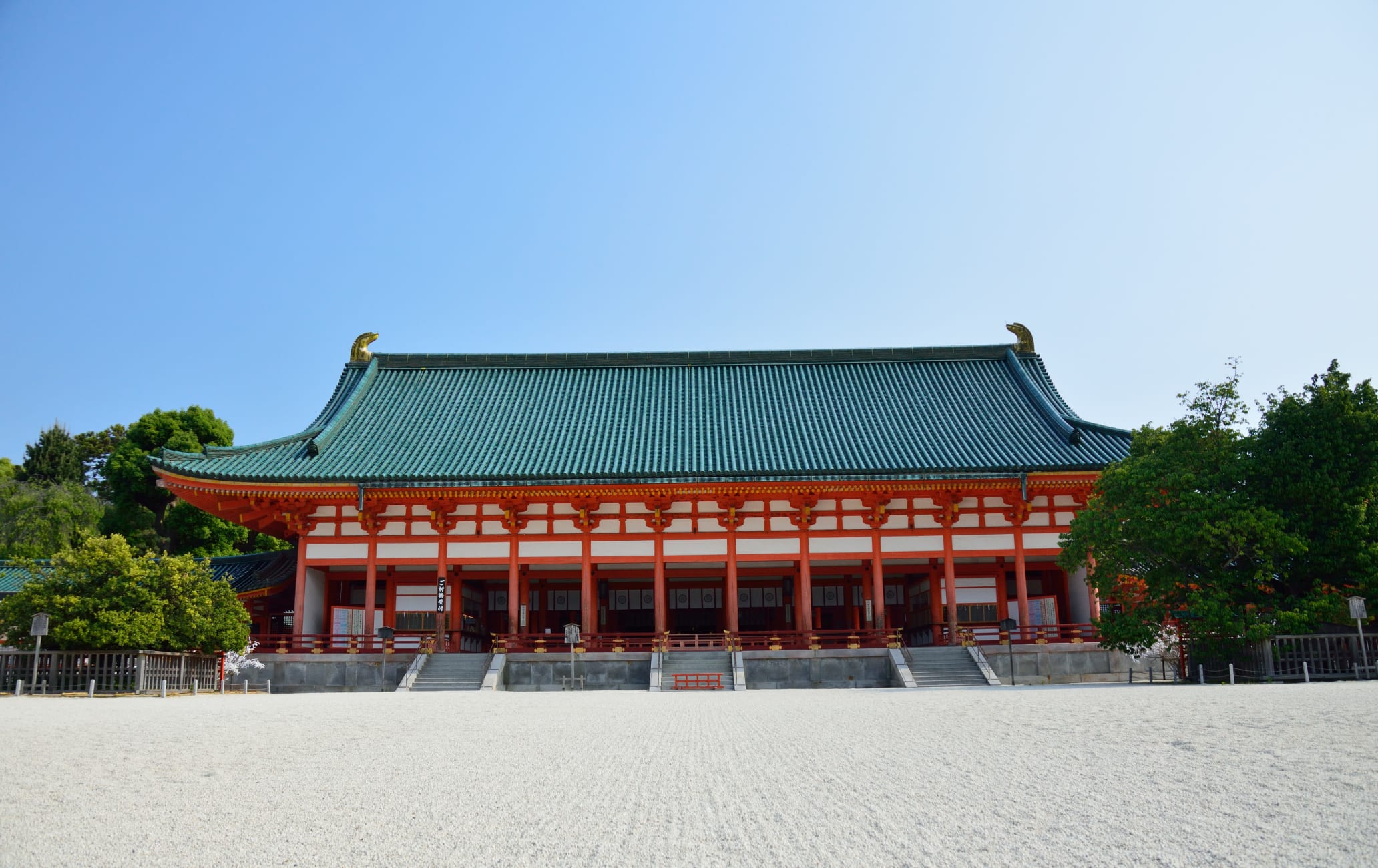Ein Schrein mit einem imposanten Torii und einer scheinbar schwimmenden Brücke
Das hervorstechendste Erkennungszeichen des Heian-jingu-Schreins, der zum Gedenken an die 1100-jährige Herrschaft Kyotos als Hauptstadt Japans errichtet wurde, ist sein gewaltiges rotes Torii. Mit seinen leuchtenden Farben und perfekt gepflegten Außenanlagen ist der Schrein ein Wahrzeichen von Kyoto und ein Publikumsmagnet.
Anfahrt
Vom Bahnhof Kyoto aus können Sie per Bahn und anschließend zu Fuß zum Schrein gelangen oder Sie können einen Bus nehmen.
Nehmen Sie die U-Bahn über den Bahnhof Karasuma Oike für eine etwa 30-minütige Fahrt bis zum Bahnhof Higashiyama. Der Schrein ist dann etwa 10 Gehminuten entfernt. Sie können auch einen Kyoto-Stadtbus, entweder Bus 5 oder Bus 100, ab dem Bahnhof Kyoto nehmen.
Ein dem alten Kaiserlichen Palast nachempfundenes Hauptgebäude
Der Heian-jingu-Schrein ist recht neu. Er stammt aus dem Jahr 1895 und wurde zum Gedenken an die 1100-jährige Herrschaft Kyotos als Hauptstadt Japans errichtet – eine Rolle, die die Stadt bis 1868 innehatte.
Am Eingang des Schreins steht ein markantes 24 Meter hohes Torii, das eine 18 m lange Straße überspannt und somit eines der größten Tore seiner Art in Japan ist.
Vom weitläufigen Kiesvorplatz des Schreins haben Sie einen umfassenden Blick auf das Hauptgebäude mit seinen hervorstechenden traditionellen Rot- und Grüntönen. Dieses ist ein maßstabsgetreuer Nachbau des Kaiserlichen Palasts der Heian-Periode (794–1185).

Der Garten, der See und die Brücke
Der Garten des Schreins ist rund um einen zentralen See angelegt, der von einer malerischen Brücke überspannt wird, die auf dem Wasser zu schwimmen scheint. Kaufen Sie etwas Futter, um die allgegenwärtigen und sehr zutraulichen Koi-Karpfen oder Schildkröten zu füttern. Für den Garten wird eine Eintrittsgebühr erhoben, andere Bereiche des Schreins können jedoch kostenlos erkundet werden.

Weitere Attraktionen in der Nähe
Am besten besuchen Sie den Schrein von Süden her kommend, so dass Sie auf dem Weg zum Hauptgebäude durch das massive rote Torii treten. Dieser Weg führt durch einen Park und vorbei an einigen interessanten Museen, wie das Kyoto-Stadtmuseum und das Nationalmuseum für moderne Kunst.
Benachbart zum Park liegen der Städtische Zoo und ein Museum zum Biwa-See-Kanal, der direkt am Torii vorbei verläuft.














































